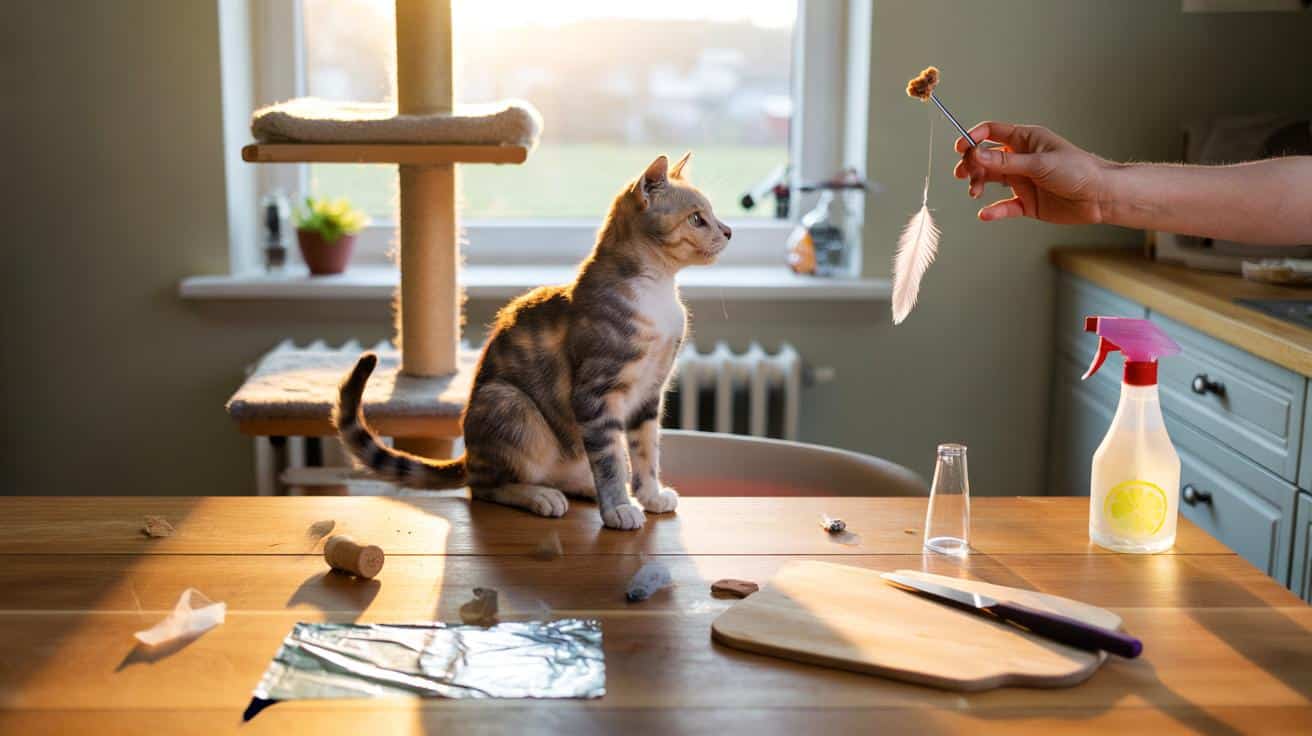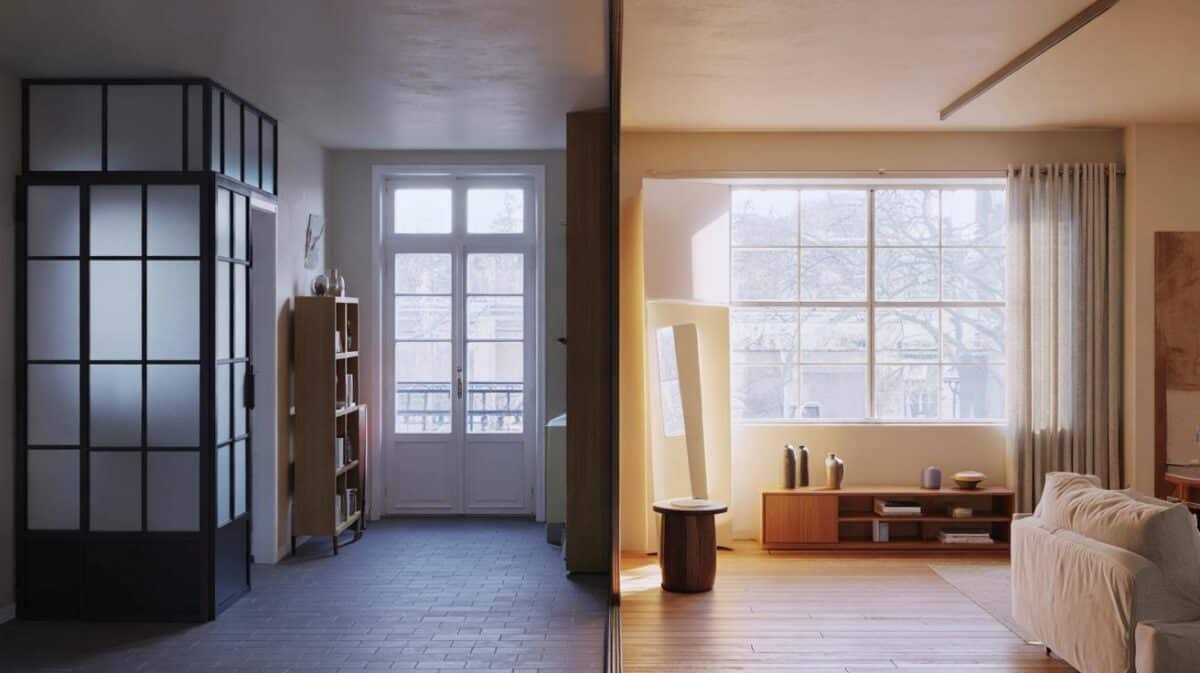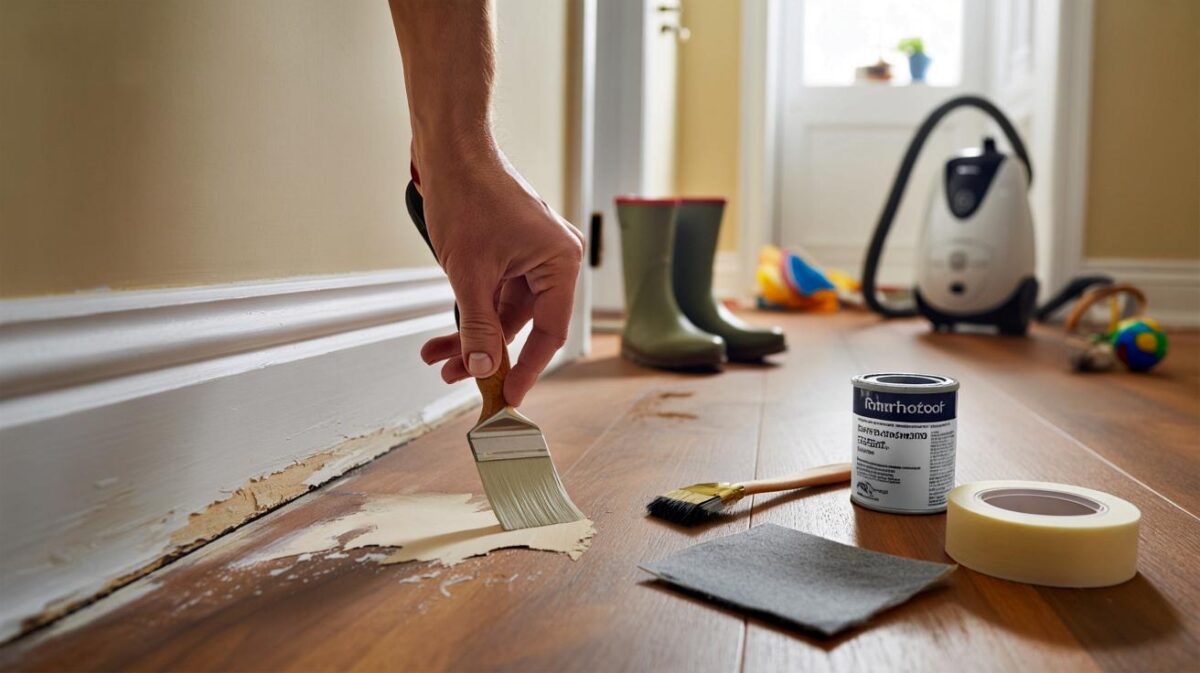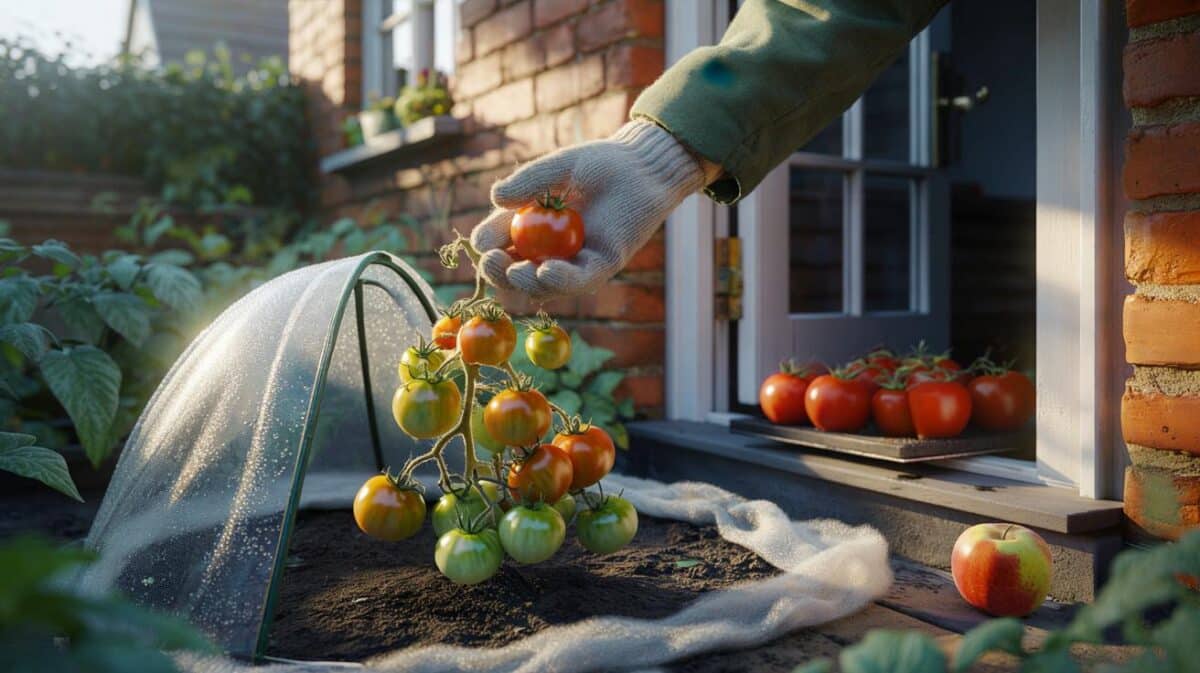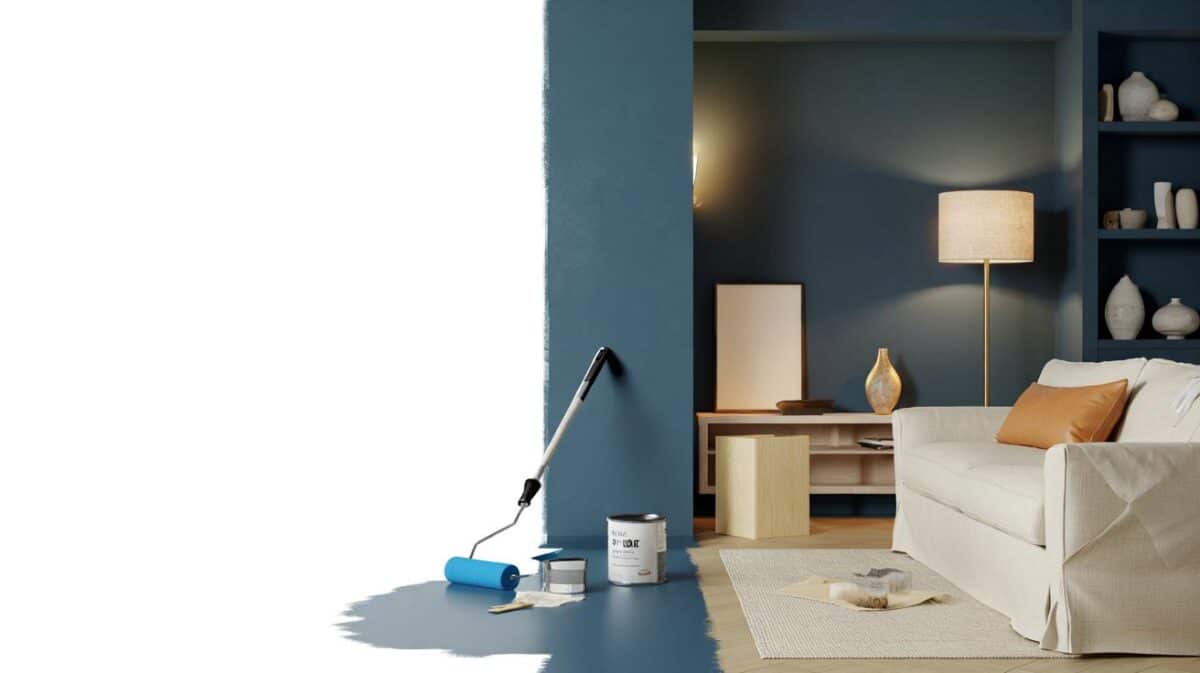Your table becomes runway, throne and snack bar.
That tug-of-war can end without drama. Shift the incentives. Make the table dull. Make approved perches glorious. Reward choices you like.
Why your cat targets the table
Cats climb for vantage, warmth and easy calories. A table offers a sweeping view of the room. It catches sun or radiator heat. It smells of roast chicken and buttered toast. It also sits in the centre of your attention, which matters to social cats.
Some climb because the layout gives no better route. If the table is the only high, stable surface, it wins by default. Many jump to check plates after meals. Others perch to watch people and feel involved.
Height, heat, smell and attention drive the behaviour. Change those levers and the habit changes with them.
Spot the pattern before you act
Note when the jumps happen. Morning sun? After supper? During calls when you sit down? Patterns tell you which lever to pull. If it is heat, offer warmth nearby. If it is food odour, clear plates fast and wipe surfaces. If it is boredom, schedule play before peak jump times.
Make the table a no-go zone
The simplest route is to alter the surface so it stops feeling like a safe runway. You are not punishing. You are tweaking the physics and the texture.
The sticky-foot trick
Double-sided tape changes the landing. Cats dislike tacky paw pads. Run short strips along favourite launch spots. Leave a clear path for people. Remove before guests arrive if you wish. Tape does not harm wood or paws when used briefly and removed gently.
Wobble, roll and rustle
Instability puts off clean jump lines. Lay a loose chopping board so it clacks when stepped on. Scatter a few corks or plastic bottle caps that roll underfoot. Place a loosely closed book so it shifts. A sheet of crinkled aluminium foil adds noise and a texture many cats avoid.
Scent and feel hacks
Some cats dislike citrus fragrance. A quick wipe with a mild citrus-scented cleaner can help, as long as the product is safe for pets and fully dry before paws touch. Avoid strong essential oils. They can be risky for cats if ingested or inhaled in high concentration.
Make the wrong choice mildly awkward. Make the right choice obviously better. Your cat will pick the easy win every time.
Offer better heights and heat
Provide a legal perch that beats the table. Height is not the problem. Lack of approved height is.
Place a tree where the action is
Put a sturdy cat tree near the social zone, not in a dead corner. Add a soft blanket. Sit where your cat can see you from it. Many cats swap to the higher, comfier spot within days.
Use shelves or a window perch
Simple wall shelves at staggered heights create a climbing route. A window shelf offers a view and winter sun. Ensure fixings hold firm. Wobble kills confidence and invites a return to the table.
Add warmth where you want them
A heat-reflective mat or a radiator bed costs little and draws cats like magnets. Place it within sight of the kitchen or living room seats. Warmth plus view beats lukewarm table wood for most cats.
Train the habit with a 9‑minute routine
Training keeps the change. Nine focused minutes each day make the new rule stick.
Reward the perch, not the leap
Keep treats on the approved perch. Say a consistent cue like “up here”. Lure once, then reward only when paws land on the allowed spot. Deliver three tiny treats over ten seconds. Add a chin rub if your cat likes touch.
Ignore the climb, redirect calmly
Do not shout. Do not spray water. Lift calmly, place on the allowed perch, and reward there. Give zero attention to the table action. Give all the good stuff on the perch. Cats repeat what pays.
Keep the house rules aligned
Ask everyone to follow the same script. If one person sneaks snacks at the table edge, the signal blurs. Post a short note near the table for guests if needed. Consistency reduces training time.
Consistency beats scolding. Pay the behaviours you want. Starve the ones you do not.
Budget toolkit: seven fixes under £10
- Double-sided tape, 10–20 m roll: £4–£6
- Aluminium foil, kitchen roll: £0.80–£2
- Corks or plastic caps: free from recycling
- Rubber doorstop or wobble board hack: £3–£6
- Citrus-scented pet-safe surface spray: £2–£5
- Fleece blanket for a perch: £3–£7
- Clicker or treat pouch for training: £2–£6
Quick reference: triggers and swaps
| Trigger | Swap-in alternative | Typical change time |
|---|---|---|
| Heat from sun or hob | Radiator bed next to you | 2–5 days |
| View over the room | Taller cat tree by sofa | 3–7 days |
| Food smells and crumbs | Clear plates fast, wipe, feed in puzzle bowl | Immediate to 3 days |
| Attention seeking at mealtimes | Pre-meal play, cue “up here”, reward perch | 1–2 weeks |
| Habitual route across room | Wall shelves as an overpass | 1–3 weeks |
Set yourself up for success
Clear the table after meals. Wipe surfaces so the scent trail fades. Store bread and butter in cupboards. Keep a small treat pot near the allowed perch. Cue and reward every time you sit down with food or a brew.
Schedule a daily play burst. Six minutes with a wand toy burns steam. Finish with three minutes of calm feeding on the approved perch. Your cat learns that mealtimes mean action and payoff away from the table.
Safety, hygiene and what to avoid
Tables near hobs or knives pose real risks. Hot pans and sharp blades can injure an exploring cat. Reducing table access protects paws as well as plates. Kitchen hygiene also benefits. Fewer paw prints means less chance of bacteria transfer.
Avoid harsh deterrents. No pepper dust, no strong essential oils, no shock mats. These can stress or harm a cat. Stick to texture, balance and better alternatives. Keep tape off fur. Replace any setup that scares your cat rigid. The goal is clarity, not fear.
When progress stalls
If nothing shifts after three weeks, reassess the layout. Is the legal perch truly higher or warmer? Is everyone consistent? Try moving the cat tree into the social hotspot. Increase play before the problem window. Use smaller, more frequent rewards. Consider a simple clicker to mark the exact moment paws land on the right spot.
Some cats guard access to people when other pets compete. Add a second perch so each cat gets height and proximity. Feed in separate spaces. Reduce rivalry, and the table loses its pull.
